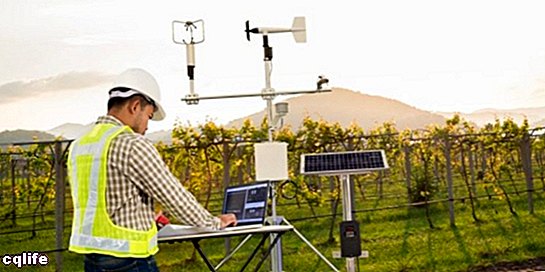We explain what humidity is, what types exist and how it is measured. Also, the humidity in the climate and how clouds form.
The humidity in the air depends on factors such as the proximity of water and vegetation.What is humidity?
Humidity is the amount of water vapor in the air. There are always water steam at air and the amount varies depending on various factors, for example, if it just rained, if you are near the sea, whether or not there is vegetation on the ground, the temperature of the air, among others.
This means that every place that has the presence of water with the possibility of heating up and evaporating is a source of humidity, such as that which comes from the surface of rivers, lakes, damp earth and water. plants, where water can be presented in solid state (frozen), liquid Y gaseous (steam).
Humidity in the climate

The weather it is the result of many factors working together. Landforms, such as moutains Y seas, decisively influence its characteristics. Therefore, to determine the climate it is essential to analyze the temperature, air pressure and humidity.
Hygrometry is the part of physics that studies the causes of humidity in the atmosphere and the measure of its variations. Its name derives from the Greek, hygroscopy, hygro which means "wet" and scopia which means "exam".
Types of humidity
The types of humidity can be:
- RH. It is the capacity of the air to store water, which depends on the saturation point (limit of that air to contain water) and on a certain temperature. Its calculation is defined by the quotient between the amount of vapor present in the atmosphere, divided by the maximum amount it could contain, multiplied by one hundred (and the result is expressed as a percentage). A relative humidity of 100% indicates that it has reached its saturation limit point and, from there, any excess water vapor condenses (becomes liquid).
- Absolute humidity. It is the mass of water vapor that is present in a given volume of air, before it is condensed (relative humidity). It is important to note that temperature conditions absolute humidity: hot air masses have a greater capacity to store water vapor than cold air masses. Absolute humidity is expressed in grams per cubic meter.
The difference between relative humidity and absolute humidity is that the first corresponds to a percentage measure (how much percent of the water that the air can contain is stored there), and the second corresponds to a measure of the amount of water in weight that air contains (calculated in grams or kilograms).
Humidity sensor

Humidity can be measured with sensors. Among them, the following stand out:
- The hygrometer. It allows to determine the degree of humidity of the air or other gases. In meteorology, measures the moisture content in the atmosphere.
- The psychometer. It allows determining the amount of steam that must be added to humid air to saturate it, that is, it indirectly measures humidity.
Clouds
Clouds are formed by drops of water and other particles that are suspended in the air. Those drops come from the condensation of water vapor. If there are clouds in the sky, a moist air mass has cooled enough to become saturated and condensation begins.
If there are no clouds, it does not mean that there is no humidity: the air always contains some water vapor, but sometimes it does not contain enough water to condense.
